#Edwin Forrest
Explore tagged Tumblr posts
Text
Edwin Forrest, circa 1878

#Edwin Forrest#history#archive#photo#vintage#archive photo#library of congress#archive photos#vintage photo#smithsonian#art#horse#horse race
2 notes
·
View notes
Text
This account is for an incredible young boy who gave his life during the Second World War.
It is dedicated to him and his enjoyments — most importantly, his personal life and who he was as a person.
That is what truly matters.
Edwin Gordon Thomas

Born 23 July 1921
Likes: 👍
Cinema 🎥 🎞️
Theatre 🎭
Beer 🍺
Cigarettes 🚬
Loves: ❤️
Lucky rare leave! 👨👩👧👦
Nights out with friends 🌃 🍻
Favourite films:
Fantasia (1940)

Gasbags (1941)

The Man Who Talked Too Much (1940)

49th Parallel (1941)

Favourite Songs:
Tangerine (Jimmy Dorsey + Helen O'Connell)
Skylark (Helen Forrest)
Dance of the Hours (Fantasia 1940, from the opera La Gioconda)
Please, follow Edwin's account to share your respect — and most importantly to remember Eddie for the sweet boy he is.
#Edwin Gordon Thomas#Eddiegolucky#Fantasia 1940#49th Parallel#Gasbags 1941#The Man Who Talked Too Much#Tangerine#Jimmy Dorsey#Helen O'Connell#Dance of the Hours#Mickey mouse#1940s#Second World War#Edwin's Letters#Skylark#Helen Forrest#Artie Shaw#23 July 1921#1941#1940#Laurence Olivier#Spotify
1 note
·
View note
Text
@downspirals asked: 🎲 from Forrest stuck in an elevator, it's been almost an hour and there's still no sign that help is on the way

being dead has many advantages to match against the many disadvantages. one being that he has nothing but time on his hands. edwin does not have the needs for sleeping or sleeping. he doesn't have deadlines or events that draw his time from anything but what he wants to do. so being stuck in a metal box for an hour is far from an inconvenience to him. mildly irritating, sure. but not a detriment to his day.
" i am sure the fire department will be along shortly. i won't leave until you're out. " which he very much could do. the walls are made of galvanised steel and not the trapping iron that would have truly stopped him. but he finds himself unable to leave the other. the oddity of being seen by someone too interesting to pass up. " until then, perhaps we can learn more about each other. i believe that is how friends are made, yes? " charles certainly seemed to paint it that way.
#downspirals#? ⇆ ( i'm the brains | threads. | )#( hope this is okay! edwin and forrest buddy time )
1 note
·
View note
Text
In Cincinnati, Everybody Who Was Anybody Got The Scoop At Grandpa Hawley’s
The year before he assassinated President Abraham Lincoln, the actor John Wilkes Booth was in Cincinnati, performing at Wood’s Theater in Shakespeare’s “Merchant of Venice” and “The Taming of the Shrew.” Throughout the run, Booth was a frequent visitor to Grandpa Hawley’s newsstand, just two blocks south at Vine and Fourth. Years later, Hawley told the Cincinnati Post about Booth’s visits [28 April 1903]:
“He was in my store while here and I remember a conversation with him. I do not remember what we talked about in particular, but there was nothing to indicate that he had the least thought of perpetrating the dark crime with which his name is stained.”
By coincidence, James R. “Grandpa” Hawley also had a connection to Lincoln. Hawley first opened his business on Tuesday, 12 February 1861, and watched from the shop door as President-Elect Lincoln, on his way to Washington, was paraded down Vine Street to the Burnet House. Throughout the Civil War, Grandpa Hawley was the place to go for news of the conflict. Hawley told the Times-Star [10 January 1891]:
“That was in the war time, you know, and then the illustrated periodicals monopolized the sale, for in them were pictures of the generals and battles and the printed material dealt with the doings of the army.”
In fact, Hawley’s patrons often included those very generals themselves, picking up the latest weekly to read what was being said about the war. Generals Ulysses Grant and William Tecumseh Sherman famously mapped out the strategy to ensure a Confederate defeat in Parlor A of the Burnet House and gathered a lot of their information from Grandpa Hawley’s newsstand. He told the Post:
“I do not believe I ever saw them in uniform. Grant was not very talkative, but Sherman frequently started a conversation.”
Another regular military visitor to Hawley’s was Philip Henry Sheridan, whose triumph at the Battle of Cedar Creek was memorialized in Thomas Buchanan Read’s poem, “Sheridan’s Ride.” That poem was required reading for generations of American school children and the author, a Cincinnati resident, was also a frequent customer of Grandpa Hawley’s. It is not recorded whether poet and subject ever met at the Vine Street newsstand, but they might well have.
Vice President Andrew Johnson spent so much time at Hawley’s that the news vendor took to calling him “Andy.”

In addition to generals, politicians and poets, Grandpa Hawley’s shop was also a gathering place for the actors who trod the boards at Cincinnati’s theaters throughout the Nineteenth Century. Edwin Forrest was among the first Americans to gain distinction as a Shakespearian star. He frequently performed in Cincinnati and always stopped by to see Hawley, who recalled:
“In my mind I can see him now with his tragedy stride and hear his deep rumbling voice.”
In almost every interview he gave, Hawley mentioned Adelaide Neilson, whose fame as an actress almost equaled her fame as a great beauty.
“Neilson, the actress, has been here many times, and always used to pat the little newsboys on the head and give them an encouraging word.”
Hawley himself was something of a Cincinnati celebrity, mostly because of his enormous beard, which ran from his chin almost to his belt buckle. Most of the Cincinnati papers remarked about the “biblical” dimensions of his whiskers, rivaled only by those of Vine Street saloonist Andy Gilligan.
Many folks stopped by just to chat with Hawley, who was an especially entertaining raconteur, but most came for the news. In those pre-electric days, when “the media” meant print publications, Grandpa Hawley moved a lot of paper. He told the Times-Star that New York daily newspapers sold the most in his shop, followed by dailies from Chicago, St. Louis and Louisville. Among the weeklies, Harper’s and Leslie’s ran neck-and-neck, followed by the London Illustrated News. Some readers were quite dedicated to their favorite publication:
“One lady used to walk down from Walnut Hills every week to get the New York Ledger, because it would not be delivered to her until the morning following its arrival here. One day a Walnut Hills man who was a regular customer of mine asked me if I knew why he always took two copies of the New York Ledger. I told him I supposed he got one for a neighbor, but he said it was because he had two daughters and they were always squabbling about which should read it first, until, to keep peace in the family, he decided to give both a chance.”
Those were the days when multiple magazines appealed to every specialized interest. Hawley sold dozens of sports magazines, humor magazines, fashion magazines, science magazines and literary journals of contemporary thought like Atlantic Monthly and the North American Review – both of which are still published today. He carried most of the major periodicals published in German and French.
After 40 years in business, Grandpa Hawley found himself evicted from his landmark shop to make way for the construction of the Ingalls Building, the first reinforced concrete skyscraper in the world. Railroad magnate Melville E. Ingalls spent so much effort convincing city officials to allow him to build his revolutionary building that he gave little thought to the businesses he displaced.
Grandpa Hawley ended up relocating to the nearby Emery Arcade on the other side of Vine, but years of generosity caught up with him and bankruptcy was a real possibility. According to the Post:
“Everybody’s word goes with ‘Grandpa’ Hawley and were his customers so disposed they could carry away in overcoat pockets or under their arms several times as much as they paid for.”
At this dark moment, Hawley’s theatrical friends, accumulated over the decades, sprang into action and staged a benefit extravaganza for him at the Grand Opera House on 1 May 1903, raising more than $650 and saving the old man’s finances. It was a short-lived victory. Not quite a year later, Grandpa Hawley was dead. As he was laid to rest in Covington’s Linden Grove Cemetery, the Post [20 February 1904] eulogized:
“’Grandpa’ Hawley did not have an enemy in the world. For a lifetime he jogged along in an even, quiet way. He was honest and fair. He was never too busy to clasp hands warmly and talk entertainingly. He possessed a smile that was born of the natural kindness in his soul.”

9 notes
·
View notes
Text
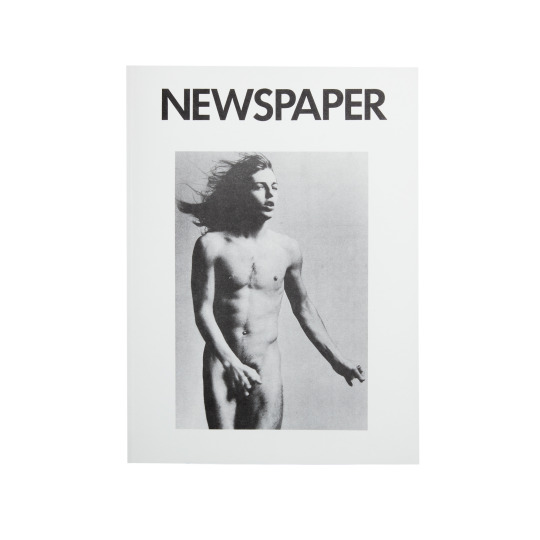




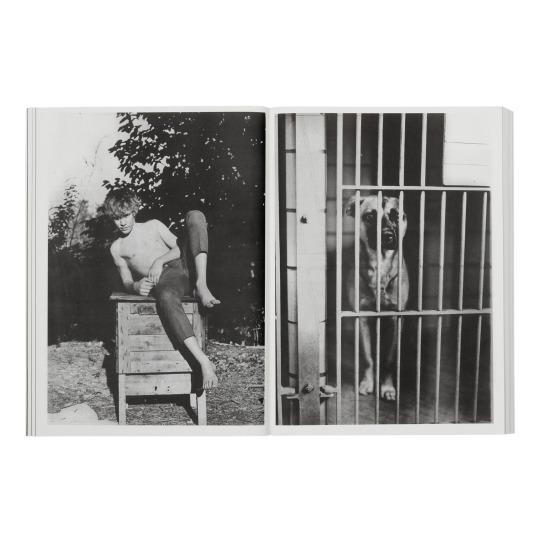
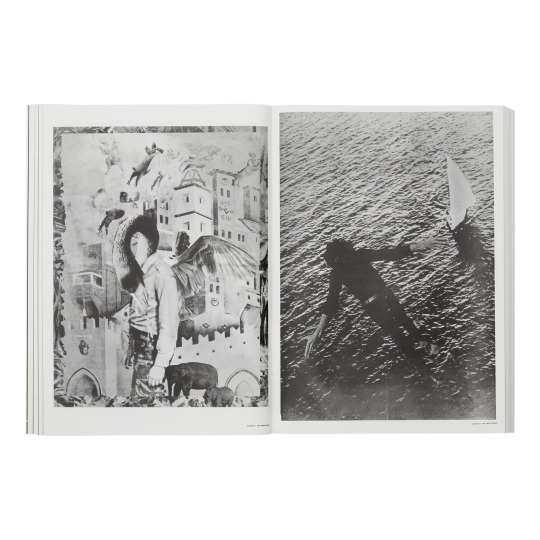





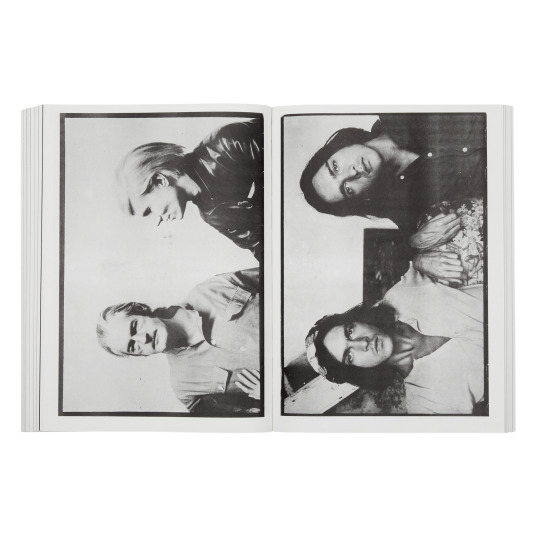
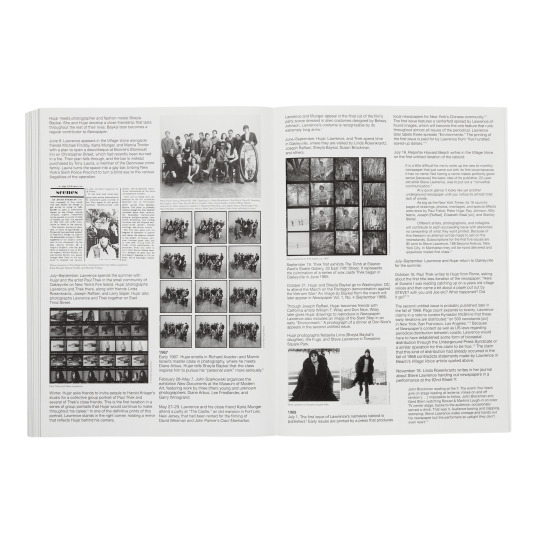

2023年9月15日
【新入荷・新本】
Various Artists Newspaper, Primary Information, 2023
416 pages. 9.75 x 13.38 Inches. Paperback. Edition of 4500.
価格:7,480円(税込)
/
1968年から1971年にかけてスティーヴ・ローレンスが発行し、ピーター・ヒュージャーとアンドリュー・ウルリックが編集に携わったニューヨーク発のタブロイド誌『Newspaper』の復刻版。
『Newspaper』は、言葉を使わず、写真だけを掲載した定期刊行物で、14号にわたって40人以上のアーティストの異質な活動を取り上げています。新しい作品と並行して流用された素材を掲載することに編集の重点を置き、1960年代後半の現代社会を象徴するハイカルチャーとローカルチャーの視覚的言語を体系化しようとしました。美術史的な言説からはほとんど見落とされているが、当時のアメリカで活躍し、尊敬されていた多数のアーティストと、新興のクィア・アーティストの仲間たちを紹介しています。
『Newspaper』は、1969年に創刊されたアンディ・ウォーホルの『Interview』や、レス・レヴィンの『Culture Hero』に先駆けるアーティストが発行するタブロイド誌のひとつですが、他のタブロイド紙とは対照的に、『Newspaper』はイメージに特化していました。
その全14号が初めてこの一冊にまとめられています。
Published by Steve Lawrence and edited with Peter Hujar and Andrew Ullrick, Newspaper was published in New York City between 1968 and 1971.
Newspaper was a wordless, picture-only periodical thatran for fourteen issues and featured the disparate practices of over forty artists. With an editorial focus on placing appropriated material alongside new works, the periodical sought to codify a visual language of high and low culture that represented contemporary society in the late 1960s. While largely overlooked in art-historical discourse, Newspaper showcased many of the most revered artists working in the United States at the time, as well as an emerging coterie of queer artists.
The mid to late sixties was a flourishing period for artists experimenting with new media formats such as books, records, and magazines to create or distribute their work. Newspaper was one of the first artist-published tabloids of its era, preceding Andy Warhol’s Interview and Les Levine’s Culture Hero, both of which debuted in 1969. However, in contrast to other tabloids, Newspaper focused strictly on images.
At a time when photography was not being exhibited regularly in galleries, Newspaper provided an alternative exhibition space for the medium and some of the era’s greatest photographers. The publication’s large size and unbound format encouraged readers to take it apart and hang its pages, which was how Newspaper was installed at the Museum of Modern Art’s influential Information show in 1970.
This is not to say that Newspaper only existed within the narrow confines of the art world, far from it. It lived within (and shared contributors with) a robust network of underground and queer periodicals like The New York Review of Sex, Rags, and Gay Power, among others. Yet, unlike many of these tabloids, Newspaper has largely disappeared from the discourse around underground magazines, queer publishing, and artists’ periodicals.
All fourteen issues of Newspaper are compiled in this volume for the first time.
Featured artists include: Diane Arbus, Art Workers Coalition, Richard Avedon, Clyde Baines, Sheyla Baykal, Peter Beard, Brigid Berlin, Richard Bernstein, Ann Douglas, Paul Fisher, Maurice Hogenboom, Peter Hujar, Scott Hyde, Christo and Jeanne-Claude Javacheff, Ray Johnson, Edwin Klein, Yayoi Kusama, Gerald Laing, Dorothea Lange, Steve Lawrence, Jeff Lew, Roy Lichtenstein, Frank Mercado, Duane Michals, Jack Mitchell, Forrest “Frosty” Myers, Billy Name, Stephen Paley, Warner Pearson, Jurgen Warner Piepke, Charles Pratt, Joseph Raffael, Mel Ramos, Lilo Raymond, Ruspoli-Rodriguez, Lucas Samaras, Alan Saret, Bill Schwedler, Leni Sinclair, Norman Snyder, Elizabeth Staal, Stanley Stellar, Terry Stevenson, Paul Thek, Andrew Ullrick, Andy Warhol, William T. Wiley, and May Wilson.
36 notes
·
View notes
Note
17 and 50 (tell me everything lol)
17. Any OC OTPs?
:3c




Um. Them !!!!! Loki isn't technically my oc but at this point i've diverged so far from comics canon I basically consider him my own version of the character LOL!!! (And since Marvel took him from mythology I have every right. Anyway. Almost zero resemblance to the mcu too, i dont consider them even remotely the same character 🤷♀️) I could talk about them like. hours. I don't know what to put here in a text post. Send any questions to my inbox (that's a demand)
50. Give me the good ol’ OC talk here. Talk about anything you want
Okay HMM I guess I'll use this question to do a very broad overview of my stories! Maybe that should be its own post?? LOL
My main focus is on my Marvel fan characters:
Gail and Erica, twin sisters yoinked from my webcomic and all grown up, Valentine, the Valentine Crew (Crash, Red, Hands, Roux, Fuse), Keegan, Brightgene (mutant) kids (Brianna, Edwin, Luiz, Ali), tenants/residents at Gail and Loki's mansion (Eunice, Elenari, Avril ), my own AU version of the Guardians of the Galaxy... That's most of them.
I also have a few DC characters (Breeze, Doomscroller, a digital Batgirl, Paisley and Siren)
My original stories:
Fledge Fighters (webcomic, mostly technically finished), Characters from that are Gail and Erica (as kids), Pace, Rae, Michael, JD, Stephen, Nathan, Beck, Perri, Agent Jay, Flare Pants Man. Teen superhero hijinks on a "crime free" island.
Sketch Ninja (maybe someday webcomic): Rye, Kytton, Ciela, Kizzy, Dex, Nova: Ninjas have the ability to turn drawings into weapons. Popular Machinery (pitching this to publishers ideally): Kaiya, Aalex, Ripflick, Olivia, Juliet, various robots: Influencers with mechs. Need I say more?
Danger Spoon (WAY on the backburner) Tyler, Jamie, Lillith, Becca, Ruth: Boy from the big city moves to conservative small town and ends up as the front singer of a girl band.
Daisy's patience: Daisy, Sugar, Soap, Loafcat: kids fight giant robots. Probably won't do anything big with this unless I get a chance to pitch as a cartoon.
Honey and the Bee (Raina, Maple, Forrest) and Journey of Hearts (Kyo, Mimi, Oliver) Both very underdeveloped romances that I'll never write but the characters stick around in my head so they might get repurposed into something else later.
OKAY WAS THAT ENOUGH????
Edit: i can't even begin to list my one-off fan characters ahaha!! but honorable mention to Tomo my TMNT oc who already has like 3 iterations
4 notes
·
View notes
Text
Aamir Aaron Abdul Adam Adan Adel Adonis Adrjan Adrjen Aidan Aiden Aja Ajmad Ajmed Al Alajn Alan Albert Alberto Alek Alen Alessandro Alek Alekander Alekis Alfonso Alfrado Alfred Alfredo Ali Alistajr Alistajre Alvin Ameen Amin Amir Amjas Anand And Andre Andreas Andres Andrew Angel Angelo Anselm Antjon Antojne Anton Antonjo Antwan Ari Arjun Armando Arnje Arnold Art Artjur As Asjle Asjton Augustine Aureljo Austin Aver Akel Bajl Bajle Bajleig Baltjassar Barr Barrett Bart Bartjolomew Basjeer Beau Ben Benett Benito Benjamin Benji Bernard Bilal Bjorn Bjron Blade Blajne Blajr Blake Bo Bob Bojd Bojke Brad Bradford Bradle Bram Brandon Brant Brantle Brenan Brendan Brendon Brenon Brent Brenton Bret Brett Brik Brjan Brjke Broderik Brodje Brok Bronson Brook Bruke Bruno Dakota Dalas Dale Damjan Damjen Damjon Damon Dan Dane Danjel Darb Darjo Darjus Dark Darnel Darren Darrjl Dav Dave David Davis Dawson Dean Deandre DeAngelo DeJuan Del Demetri Demetrjus Denis Denzel Deon Derek Desmond Dev Devin Devon Dewe DeWitt Dekter Dik Dirk Djego Djlan Djon Dojle Dom Dominik Don Donald Donavin Donel Donje Donovan Donte Doug Douglas Drew Duane Dunkan Dust Dustin Dwajne Dwigjt Earl Ed Edgar Eduardo Edward Edwin Eli Elija Elis Eljas Eljott Elro Elton Elvis Emanuel Emer Emett Emil Emiljo Emor Enriko Enrikue Enzo Erik Ernest Ernje Esteban Etjan Eugene Evan Ezra Fabjo Farouk Faruk Felipe Felik Fernando Ferris Filippo Fin Flint Flojd Forrest Frank Frankisko Frankje Franklin Franko Fraser Fred Frederik Fritz
abe Gabrjel Gage Galen Gar Garet Garret Garrett Gart Gavin Genaro Gene Geoffre George Gerald Geraldo Gerik Gil Gilbert Gilberto Giles Gino Gjorgjo Gjovani Gjuseppe Glen Gord Gordje Gordon Grajam Grajson Grant Greg Gregor Grejson Gu Gus Hajden Hakeem Hal Halim Hamis Hamza Hank Hans Harlan Harold Harr Harrison Harve Hassan Heat Hektor Heljas Hendrik Henr Herb Herbert Herbje Herk Herkules Herman Homer Houston Howard Howel Howje Hudson Hue Hug Hugo Hunter Husajn Hussein Ian Ike Iljam Imani Imanuel Ira Irwin Isa Isaak Isaja Ivan Ja Jabar Jabbar Jaden Jafar Jajden Jajme Jajvaugjn Jak Jakob Jakkues Jakson Jaleel Jalil Jalinson Jamaal Jamal Jamar Jamel James Jamil Jamison Jamje Jan Jane Janike Janikua Janikue Janikuea Jared Jaron Jase Jason Jasper Javjer Javon Jak Jakon Jakson Jean-Luk Jean-Paul Jeb Jebedja Jed Jededja Jeff Jeffre Jem Jerem Jeremja Jermajne Jerome Jerr Jess Jesse Jesús Jet Jetjro Jett Jim Joakujn Joe Joel Jojn Jon Jona Jonas Jonatjan Jonatjon Jord Jordan Jorge Jos Jose Josep Josjua Juan Judd Jude Juljan Juljo Justin Ka Kaden Kajden Kal Kaleb Kaleel Kalil Kalob Kalvin Kameron Kami Kamilo Kare Kareem Karl Karlo Karlos Karlton Karr Karson Karter Kase Kaseem Kasim Kaspar Kasper Kassjus Kedrik Keegan Keenan Keit Kel Kelan Kelvin Ken Kenan Kendal Kendrik Kenet Kenon Kent Kero Kesar Keven Kevin Kile Kim Kimo Kirb Kirk Kit Kja Kjad Kjalil Kjandler Kjanke Kjarles Kjarlje Kjase Kjester Kjet Kjiko Kjle Kjris Kjristjan Kjristopjer Kjrus Kjuk Kla Klajton Klarenke Klark Klaude Klem Klete Kletus Kleve Kleveland Kliff Klifford Klifton Klint Klinton Klive Kod Kolb Kole Kolin Kolton Konor Konrad Konstantine Kor Kore Kosmo Krajg Kris Krisjna Kristjan Kurl Kurt Kurtis Kwame Kweisi Lajne Lamar Lamont Lane Lanke LaRon Larr Lars Lateef Lawrenke Leandro Lee Leland Len Leo Leon Leonard Leonardo Lero Les Leslje Lester Levi Lewis Linkoln Ljam Ljle Ljman Ljndon Llojd Logan Lon London Lonje Lorenzo Lou Loujs Lujs Luka Lukas Luke Lukjus Majmoud Makenzje Malik Malkolm Man Mansoor Mansur Manuel Marjo Mark Marko Markos Markus Markye Markujs Marsjal Mart Martin Marvin Mason Masoud Mateo Matjeo Matt Matteo Mattjeo Mattjew Maurike Mak Makimiljan Makwel Mejdi Mel Melvin Miguel Mika Mike Mikjael Miles Milo Mitk Mitkjel Mojamed Mont Monte Morgan Morris Names Nat Nate Natjan Natjanjel Ned Neil Nelson Nestor Nevile Nigel Nik Nikjolas Niko Nikola Nikolaus Nils Nino Njels Noa Noe Norm Norman Odin Oliver Omar Oogje Orjon Orlando Oskar Otjer Owen Pablo Pajne Palmer Paolo Paris Parker Pat Patrik Paul Pedro Perk Perr Pete Peter Pjerke Pjerre Pjetro Pjil Pjilip Pjilippe Pranav Pres Preskott Preston Kuentin Kujnt Kujnton R Ra Rafael Rafik Rajeem Rajeev Rajim Rajiv Rajmi Rajmond Rale Ralp Ramiro Ramón Rand Randal Randolp Rapjael Rasjaad Rasjad Rasjeed Rasjid Raul Ravi Reagan Reed Reeke Reese Reggje Reginald Reid Reil Rembrandt Remington René Reuben Rek Rik Rikardo Rikjard Rile Ritkye Rjan Ro Rob Robert Roberto Robin Rod Rodne Roger Rojke Rok Rol Roland Rolando Roman Romeo Ron Ronald Ror Roskoe Ross Ruben Rud Rudolf Rudolp Russ Russel Rust Sal Salvador Sam Sameer Samir Samuel Sand Sanja Sankjo Santjago Saul Sawjer Sean Sebastjan Sebi Sergjo Set Sid Sidne Silas Simon Sjad Sjane Sjanon Sjareef Sjarif Sjaun Sjawn Sjdne Sjea Sjeldon Sjerm Sjerman Sjervin Skott Slade Smas Sokrates Solomon Spenker Stan Stanle Stefano Stepjan Stepjano Stepjen Steve Steven Stewart Stone Storm Stuart Sulajman Sven Tad Tajlor Tal Taner Tarik Tate Tawfik Ted Tel Teo Terr Terrel Terrenke Tim Timoty Tjaddeus Tjeodore Tjler Tjom Tjomas Tjrone Tjson Tob Tobjas Todd Tom Ton Topjer Trak Trake Trav Travis Tre Trent Trenton Trev Trevor Tristan Tro Tuk Tuker Tul Turner Van Vanke Vern Vernon Vikram Viktor Vinke Vinkent Virgil Wade Wajne Walker Walt Walter Ward Warren Webster Wendel Wes Wesle Weston Wil Wilfredo Wiljam Wjatt Wjit Wjitne Kavjer Zak Zakjar Zakjarja Zander Zane Zavjer Zedrik Zeke Zepyr
11 notes
·
View notes
Text






























Series Premiere
Outlaws - Thirty a Month - NBC - September 29, 1960
Western
Running Time: 60 minutes
Written by Carey Wilber
Produced by Joseph Dackow
Directed by Joseph Leytes
Stars:
Barton MacLane as U.S. Marshal Frank Caine
Don Collier as Deputy U.S. Marshal Will Foreman
Jock Gaynor as Deputy U.S. Marshal Heck Martin
Steve Forrest as Rance Hollister
Robert Culp as Sam Yadkin
Warren Oates as Bill Hooton
Garry Walberg as Brazos
Clint Sundberg as Jethro Squires
Dub Taylor as Storekeeper
Claire Carleton as Ruby Starr
Richard Warren as Sorely
Howard McNear as Train Conductor
Edwin Mills as Telegrapher
#Thirty a Month#Outlaws#TV#NBC#Western#1960#Barton MacLane#Don Collier#Jock Gaynor#Steve Forrest#Robert Culp#Warren Oates#Garry Walberg
0 notes
Text
Events 5.10 (before 1910)
28 BC – A sunspot is observed by Han dynasty astronomers during the reign of Emperor Cheng of Han, one of the earliest dated sunspot observations in China. 1291 – Scottish nobles recognize the authority of Edward I of England pending the selection of a king. 1294 – Temür, Khagan of the Mongols, is enthroned as Emperor of the Yuan dynasty. 1497 – Amerigo Vespucci allegedly leaves Cádiz for his first voyage to the New World. 1503 – Christopher Columbus visits the Cayman Islands and names them Las Tortugas after the numerous turtles there. 1534 – Jacques Cartier visits Newfoundland. 1688 – King Narai nominates Phetracha as regent, leading to the revolution of 1688 in which Phetracha becomes king of the Ayutthaya Kingdom. 1713 – Great Northern War: The Russian Navy led by Admiral Fyodor Apraksin land both at Katajanokka and Hietalahti during the Battle of Helsinki. 1768 – Rioting occurs in London after John Wilkes is imprisoned for writing an article for The North Briton severely criticizing King George III. 1773 – The Parliament of Great Britain passes the Tea Act, designed to save the British East India Company by reducing taxes on its tea and granting it the right to sell tea directly to North America. The legislation leads to the Boston Tea Party. 1774 – Louis XVI and Marie Antoinette become King and Queen of France. 1775 – American Revolutionary War: A small Colonial militia led by Ethan Allen and Colonel Benedict Arnold captures Fort Ticonderoga. 1775 – American Revolutionary War: The Second Continental Congress takes place in Philadelphia. 1796 – War of the First Coalition: Napoleon wins a victory against Austrian forces at Lodi bridge over the Adda River in Italy. The Austrians lose some 2,000 men. 1801 – First Barbary War: The Barbary pirates of Tripoli declare war on the United States of America. 1824 – The National Gallery in London opens to the public. 1833 – A revolt broke out in southern Vietnam against Emperor Minh Mang, who had desecrated the deceased mandarin Le Van Duyet. 1837 – Panic of 1837: New York City banks suspend the payment of specie, triggering a national banking crisis and an economic depression whose severity was not surpassed until the Great Depression. 1849 – Astor Place Riot: A riot breaks out at the Astor Opera House in Manhattan, New York City over a dispute between actors Edwin Forrest and William Charles Macready, killing at least 22 and injuring over 120. 1857 – Indian Rebellion of 1857: In India, the first war of Independence begins. Sepoys mutiny against their commanding officers at Meerut. 1865 – American Civil War: In Kentucky, Union soldiers ambush and mortally wound Confederate raider William Quantrill, who lingers until his death on June 6. 1869 – The First transcontinental railroad, linking the eastern and western United States, is completed at Promontory Summit, Utah Territory with the golden spike. 1872 – Victoria Woodhull becomes the first woman nominated for President of the United States. 1876 – The Centennial Exposition is opened in Philadelphia. 1881 – Carol I is crowned the King of the Romanian Kingdom. 1899 – Finnish farmworker Karl Emil Malmelin kills seven people with an axe at the Simola croft in the village of Klaukkala. 1904 – The Horch & Cir. Motorwagenwerke AG is founded. It would eventually become the Audi company. 1908 – Mother's Day is observed for the first time in the United States, in Grafton, West Virginia.
0 notes
Text
Hamlets have been very short (David Garrick and Edmund Kean), fat (Thomas Betterton), exceedingly fat (Stephen Kemble), tall and rangy (David Warner), immensely muscular (Edwin Forrest), plain-looking (William Macready) and superlatively handsome (John Barrymore and Laurence Olivier). They have also at times, most often in the 19th century, been women (Sarah Siddons, Charlotte Cushman, Sarah Bernhardt and, a few years ago in New York, Diane Venora).
54 notes
·
View notes
Text
This Friday: A Memoriam for the Astor Place Riots
Friday, May 10, 2024 at 5:30pm EDT Admission FREE75 minutes UNDER St. Mark’s Theater94 St. Mark’s Place, just east of 1st Avenue, NYC Every theater-lover should know the story of the Astor Place Riots of 1849, but it’s about much more than a fight between partisans of the two biggest actors of the day (the Yank Edwin Forrest and the Brit William Macready). Thousands participated in the brawl,…

View On WordPress
2 notes
·
View notes
Text
Names of Cherokee Soldiers in the Civil War
Stand Watie Early in 1861, Stand Watie organized a company to cooperate with the confederacy. Watie became the Captain; Buzzard. First Lieutenant; Wilson Suagee, Second Lieutenant; Charles Edwin Watie, Third Lieutenant and Henry Forrester, Orderly Sergeant. Their service was in Delaware District and Neutral Land which was a legal part of that district. Other companies having been formed they net…
0 notes
Text

“On the day I write this—responding partly to CORE demonstrations and draft-card burning by a Syracuse youth—Mayor William F. Walsh of Syracuse offered a "six-point legislative program aimed at reducing youthful crime and civil disobedience. . . .” Walsh asked that "a treatment and research center for juvenile delinquents be included in the new multi-million dollar mental health center to be built here."
No, Ward 7 is not only in Moscow. Nor is Ward 7 a recent phenomenon. Psychiatric sanctions have been with us for centuries. Successors to the witch hunts, they are one of the manifestations of a passage, in Western societies, from theological to secular, and from magical to "scientific," methods of social control. However, only through the creation of vast psychiatric bureaucracies in modern mass societies has involuntary mental hospitalization become a major force in the police powers of the state. To attribute this evil to communism, or to capitalism, would thus be both an oversimplification and an evasion.
Indeed, by alluding to Chekhov's Ward No. 6, Tarsis admits that he knows this. Chekhov, himself a physician, had as his protagonist not a patient, but a psychiatrist—Dr. Andrei Yefimich. The psychiatrist is honest and soon cannot tolerate the task he has unwittingly assumed. He then commits the fatal mistake of actually engaging a patient in conversation—as if such a thing were possible with one who is insane! The dramatic end follows swiftly: the psychiatrist is declared insane, is committed to the hospital, and following a near-fatal beating by an attendant, dies of a stroke. Before he is declared insane, Chekhov's psychiatrist has this to say:
I am serving an evil cause, and receive my salary from people whom I dupe; I am not honest. But then I, by myself, am nothing; I am but a particle of a necessary social evil: all the district bureaucrats are harmful and receive their salaries for nothing. Therefore it is not I who am to blame for my dishonesty but the times.
It is necessary to be absolutely clear about two points, lest Ward 7 be misread: 1. Neither involuntary mental hospitalization as such, nor its political uses and abuses, was discovered by the Soviets. 2. The fundamental logic behind commitment has been accepted throughout the world for several centuries, and is still widely accepted today: according to it, it is "humane" and "helpful" to deprive a person of his liberty—a right second only to his right to his life—on the ground of "mental illness" (or because such "illness" renders him "dangerous to himself and others"); if so, the only question is to define and determine what mental illness is or who is mentally ill.
Thus, Tarsis explains, it is "assumed, by doctors and politicians, writers and ideologists, that anyone dissatisfied with the socialist paradise must be a lunatic. . . ." Every one of the modern nation-states has, in the course of the last century-and-a-half, produced its own definitions and theories of lunacy. It is in this way that both a political and a psychiatric analysis of Ward 7 must come to the same thing: a better understanding of secular society, its burcaucracies, and its methods of social control - among them, institutional psychiatry.
The list of famous persons deprived of liberty by means of psychiatric incarceration would run to several pages; for example, Secretary of State Forrestal, Governor Earl Long, General Edwin Walker, Ezra Pound, Emest Hemingway, and Mary Todd Lincoln in the United States; in Germany Marga Krupp, the wife of Fritz Krupp, committed by the Kaiser for making a nuisance of herself with complaints about her husband's homosexual orgies; and, in Austria-Hungary, Ignaz Semmelweis, discoverer of childbed fever, for upsetting his colleagues and the public with the view that the discase was caused by the doctors' dirty hands.
Only a short time ago, men believed that slavery was a good institution, so long as only the proper people were enslaved: in historical order, the proper persons were the enemy vanquished in battle, the heathen, and the Negro. At long last, mankind concluded that slavery was a basic human wrong, regardless of who was placed in the class of slaves or why. I consider involuntary mental hospitalization also a basic human wrong. No adult should ever be cast in the sick role through the power of the state. The only deviance of which a person should be accused by the government is law breaking; and once so charged, he should, of course, enjoy all the protections of the Constitution.
Many years ago, Bertrand Russell predicted that the Communist East and the free West will, under the pressure of the forces of collectivism, drift ever closer together until the differences between the two will be indistinguishable. Years later, Orwell warned of the same dismal future in Animal Farm. The concluding paragraph reads thus: "Twelve voices were shouting . . . and they were all alike. No question, now, what had happened to the faces of the pigs. The creatures outside looked from pig to man, and from man to pig, and pig to man again; but already it was impossible to say which was which."
The nature of the "machine" that homogenizes man and pig now seems clear: it is the modern state, regardless of whether it is the police state of the East or the bureaucratic state of the West. By substituting "private happiness" for "public happiness," all modern societies tend to wean the individual from the polis, and thus deprive him of a voice in the decision of all but his most trivial interests. The result is depoliticized man. It is small wonder, then, that the "Psychological Man" of today is more interested in mental health than in liberty. Thus it is inevitable that the individual seems less a citizen and more a patient.
But not only is the nature of modern bureaucratic mass society as a depoliticizing apparatus clear. It is also clear that institutional psychiatry is an important cog in it: the Russians call it Ward 7 and Villat Kanatchikov; we call it the state hospital and the community mental-health center. Totalitarian tyranny and popular (non-constitutional) democracy thus rush to meet each other in the Therapeutic State.” - Thomas Szasz, ‘The Therapeutic State: Psychiatry in the Mirror of Current Events’ (1984) [p. 235 - 237]
#szasz#thomas szasz#therapeutic state#therapy#psychiatry#institutionalisation#mental health#mental illness#mental institution#counter psychology#tarsis#valerii tarsis#ward 7#anton chekhov#ward no 6#psychiartist#liberty#libertarian#anti psychiatry
1 note
·
View note
Text
1 note
·
View note
Text

Inspiration boards for my OC, Fanny Merifeather.
Name: Fanny Merrifeather
Maiden name: Fanny Lovett

1st husband: Archie Fairfax. Fanny was young, impressionable, and was caught in an arranged marriage with an older bird. His death was a complete accident when Fanny was defending herself from him. But this taught Fanny that she wasn't as helpless as she previously thought.

2nd husband: Professor Gideon Forrest. He was a science professor who specialized in chemistry concoctions. Fanny fell for him when she had decided to attend a class of his. Through his library, Fanny learned about poisons. After catching him with another woman, Fanny used his own knowledge against him and framed it to look as though he had perished by accident when experimenting with his potions.

3rd husband: Richard Farrington the 4th. Fanny was starting to run low on funds, so she married this rich a-hole. He was super into Spiritualism, which Fanny did find intriguing. He was very pretty, but also full of himself. Must have come as a surprise to him when he died. Found drowned, poor thing.
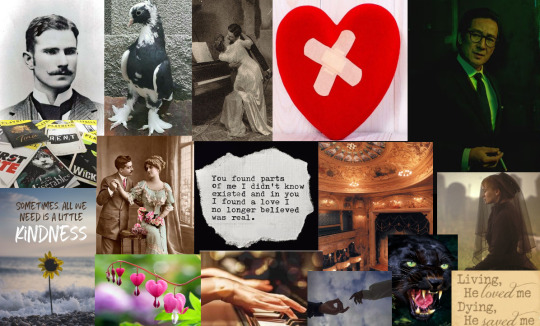
4th husband: Cecil Merrifeather. He was actually a good guy and Fanny legit loved him. He was rich, but kind and very charitable. His death wasn't caused by Fanny, but she was suspected after he was found mauled to death by a wildcat, simply because she had a not so good track record of husbands. She was found not guilty, but there may be some inlaws who hold grudges against her for false beliefs they have as to the circumstances surrounding Cecil's death. (he may have also sacrified himself to save her, which lives rent free in her head)

Fifth husband: Sir Edwin Maplewood the second. An elderly gentleman with lots of money. Fanny only married him in hopes that he would die of old age soon, as his health wasn't the best. Offing him would look suspicious after the other 4 husbands, after all. He perished, however, when their house was caught in the fire. Fanny immediately went back to using her previous name.
0 notes